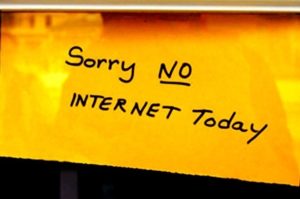The Federal Communications Commission voted 3-2 Thursday to move forward with dismantling the broadband Lifeline framework approved a year and a half ago under former Chairman Wheeler.
Chairman Ajit Pai and his two Republican colleagues approved a Notice of Proposed Rulemaking (NPRM) and an associated Notice Of Inquiry (NOI), both of which will now be subject to public comment prior to final approval. Comment deadlines have not yet been published.
These Notices include the following proposals, among others:
1) A “self-enforcing” budget cap would be imposed on the Lifeline program, effectively blocking any significant increase in users. The FCC majority’s proposed cap woud be as low as $820 million — less than half of current annual expenditures. The NPRM also raises the possibility of a “benefit limit that restricts the amount of support a household may receive or the length of time a household may participate in the program”.
2) “Non-facilities-based providers” would be eliminated from the Lifeline program. Thus, no company which does not own its own network would be eligible to provide Lifeline broadband. Stunningly, this would eliminate the majority of current providers who are offering cheap or free phone service by reselling connections from major wireless systems. Commissioner Mignon Clyburn warned in her dissent: “Over 70% of wireless Lifeline consumers will be told they cannot use their preferred carrier and preferred plan, and on top of that, they may not have a carrier to turn to after that happens.”
NDIA Analysis: The nation’s biggest facilities-based telecom provider, AT&T, is in the process of abandoning its ETC (Eligible Telecommunications Carrier) status in the majority of the states it serves which means AT&T will cease to have a Lifeline service. Currently, AT&T provides phone Lifeline service. They asked for a forbearance to not provide Lifeline broadband service. When “non-facilities-based-providers” are eliminated from providing service who will remain to offer Lifeline service?
3) “Lifeline broadband providers”, the new category added by the FCC in 2016 to permit the entry of innovative Lifeline broadband services including those developed by local nonprofits and anchor institutions, would be eliminated.
NDIA Analysis – This has effectively already happened. The nine providers approved by the previous FCC administration had their approval revoked by the current FCC. Interested providers are told to seek approval as an ETC with their state public utilities commission. ETCs must offer phone service. Any provider wanting to provide Lifeline broadband service would need to also provide phone service. This is incredibly limiting. Additionally, companies and nonprofit organizations creating innovative broadband solutions may not own their own networks, thus they will be ineligible; see Point 1.
4) While overall Lifeline funding would be capped and likely cut, Chairman Pai proposes to provide “enhanced” subsidies to Lifeline providers in unserved rural areas as well as urban areas affected by digital redlining — ostensibly to encourage whatever facilities-based ETCs remain in those areas to expand their broadband facilities to improve service.
NDIA Analysis: How that would work is very unclear. But what is clear is the FCC majority’s intention to convert a significant share of Lifeline funding from its historic purpose — a consumer subsidy aimed at making service affordable to as many households as possible — into another infrastructure subsidy program. This reinforces the misunderstanding that lack of infrastructure is the only barrier to home broadband. This is not true in all geographies of the US – rural, suburban and urban.
Additionally, NDIA has pointed out that documented examples of inner-city digital redlining are rooted in AT&T’s infrastructure investment decisions. AT&T never agreed to provide broadband Lifeline service and is now taking steps to leave the Lifeline program altogether. AT&T is the only facilities-based wireline phone carrier in many of the communities it serves. How would an enhanced Lifeline subsidy for redlined neighborhoods in those cities help overcome redlining?
In addition to the NPRM and NOI partially described above, the FCC majority ordered several immediate changes to the rules governing “Enhanced Tribal Support”, i.e. extra Lifeline subsidies for services on Tribal lands. These changes including the targeting of enhanced support to the most rural Tribal areas, and the exclusion of non-facilities-based providers such as mobile wireless resellers and satellite providers.
NDIA Analysis: Residents of tribal areas are documented as the least digitally connected in the country. Why cut support?
In a November 13 letter to the FCC, NDIA Director Angela Siefer wrote:
… by allowing eligible households to choose to use their limited Lifeline subsidies for Internet-only rather than voice connections, and by allowing innovative providers and resellers (including mission-driven nonprofits) to incorporate Lifeline subsidies into novel technology and affordability strategies, the 2016 framework created the possibility for Lifeline to contribute significantly to smart digital equity initiatives.
The proposed NPRM is clearly intended to eliminate those elements of consumer choice, provider diversification and service innovation… thus eliminating Lifeline’s potential for “Bridging the Digital Divide for Low-Income Consumers” in any meaningful way.
This is an extremely counterproductive direction for the FCC to take, if, as we have been told, the Commissioners are truly interested in ensuring access to broadband for all Americans.
(Read FCC Commissioner Mignon Clyburn’s full statement dissenting from the majority decision.)

